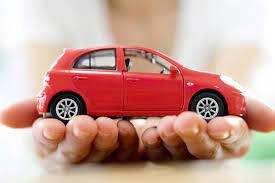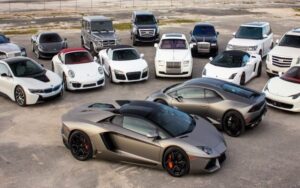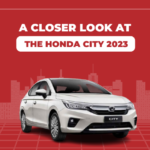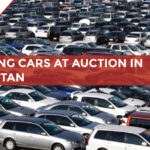The year 2025 has arrived with a new set of challenges and opportunities for Pakistan’s automobile sector. For years, the industry has been stuck in cycles of hope and disappointment. In 2025, the big question is — are we heading towards a full-blown crisis or witnessing the early stages of a boom?In this blog, we break down the key trends shaping the auto industry in Pakistan this year.
Rising Prices
One of the most discussed issues is the skyrocketing prices of cars. The weakening Pakistani Rupee, rising import costs, and higher taxes have pushed car prices beyond the reach of many middle-class buyers. Even entry-level hatchbacks have become unaffordable for a large segment of the population.
Key Factors Behind High Prices:
- Devaluation of PKR
- Higher customs duties and regulatory taxes
- Rising raw material costs
- Increased freight charges

Impact:
Car sales in the budget segment have seen a noticeable decline in early 2025, forcing many families to postpone their purchase decisions.
A Silent Boom
Despite rising prices, 2025 has also brought some positive developments. New automotive brands like MG, Changan, and BAIC are gaining market share, offering alternatives to the traditional Japanese trio of Suzuki, Toyota, and Honda.
Additionally, Korean automakers like KIA and Hyundai are expanding their product lines, introducing affordable crossovers and sedans.
Positive Highlights:
- Wider variety of car models
- Competitive features in mid-range cars
- More focus on safety and comfort
This competition is slowly driving improvement in quality and services, something long-awaited by Pakistani consumers.
Shift Towards Hybrid and Electric Vehicles
With fuel prices consistently high, 2025 is witnessing an increasing demand for hybrid and electric vehicles (EVs). Though EV infrastructure remains underdeveloped, awareness and interest in electric mobility are at an all-time high.
Key Developments in 2025:
- More hybrid options in local assembly lines
- Import of EVs like MG4 Electric, DFSK Seres
- Government pushing for EV policies (with limited on-ground execution)
The EV sector is still in its infancy but holds strong potential for future growth.
Local Industry Expansion and Challenges
The local auto industry is expanding production capacity with new plants and assembly lines. However, inconsistent government policies, high inflation, and political instability are major roadblocks.
Challenges in 2025:
- Frequent policy changes affecting investments
- Import restrictions affecting CKD kits
- High operational costs for local manufacturers
The industry’s survival depends on consistent long-term policies and reduction in taxes to promote growth.
Used Car Market on the Rise
With new cars becoming increasingly unaffordable, the used car market is thriving in 2025. More people are opting for reconditioned Japanese cars or local used cars to save costs.
Observations:
- High demand for 660cc and hybrid used cars
- Steady resale value despite economic challenges
- Social media platforms fueling direct buyer-seller connections

Crisis or Boom?
The Car Industry in 2025 is Both:
- Crisis for buyers looking for affordable options.
- Boom for the upper-middle class with access to financing and the used car segment.
- Emerging Opportunity in EVs and hybrid cars.
- Challenge for automakers to balance affordability with quality.
Final Thoughts
Pakistan’s automobile sector in 2025 stands at a crossroads. While affordability remains a serious concern, the influx of new players, rising EV trends, and gradual improvements in quality signal positive change. Whether it becomes a crisis or a boom will depend on government policies, economic stability, and how quickly the industry adapts to consumer needs.









